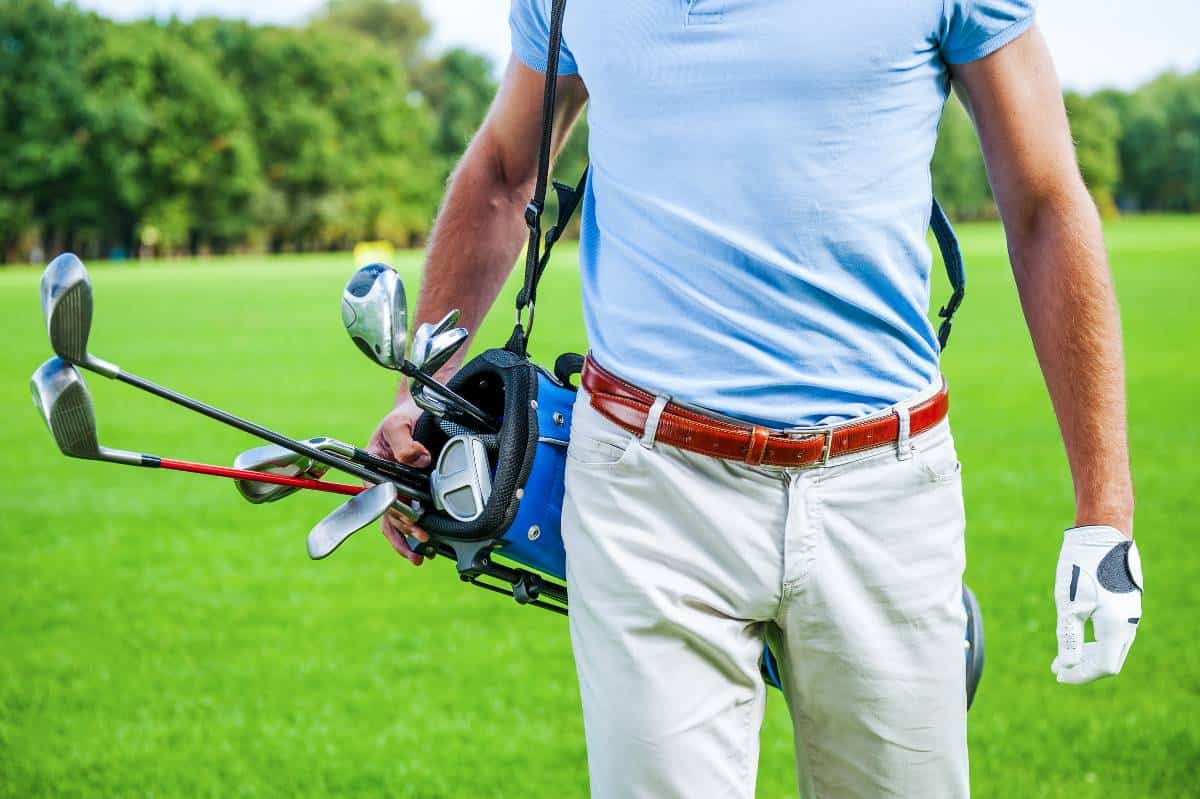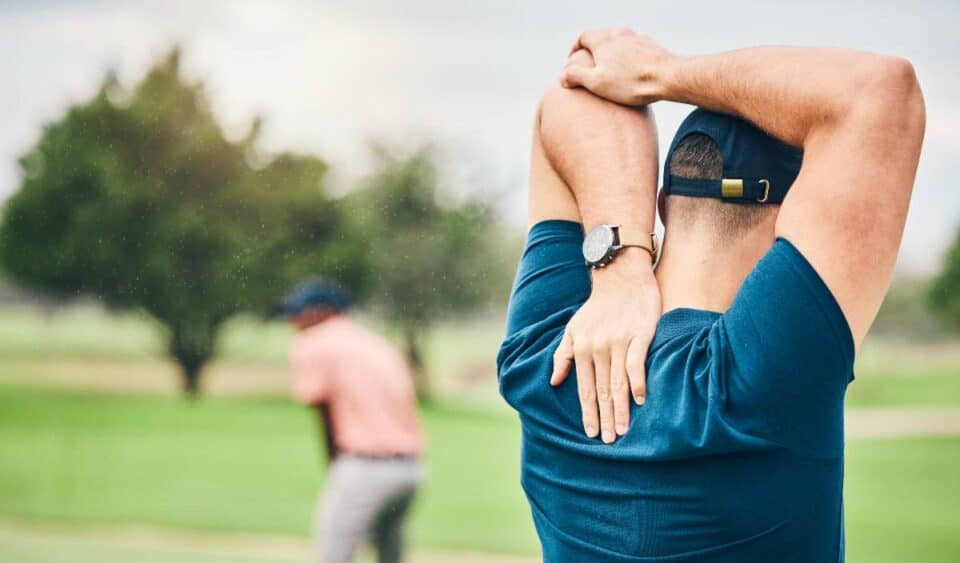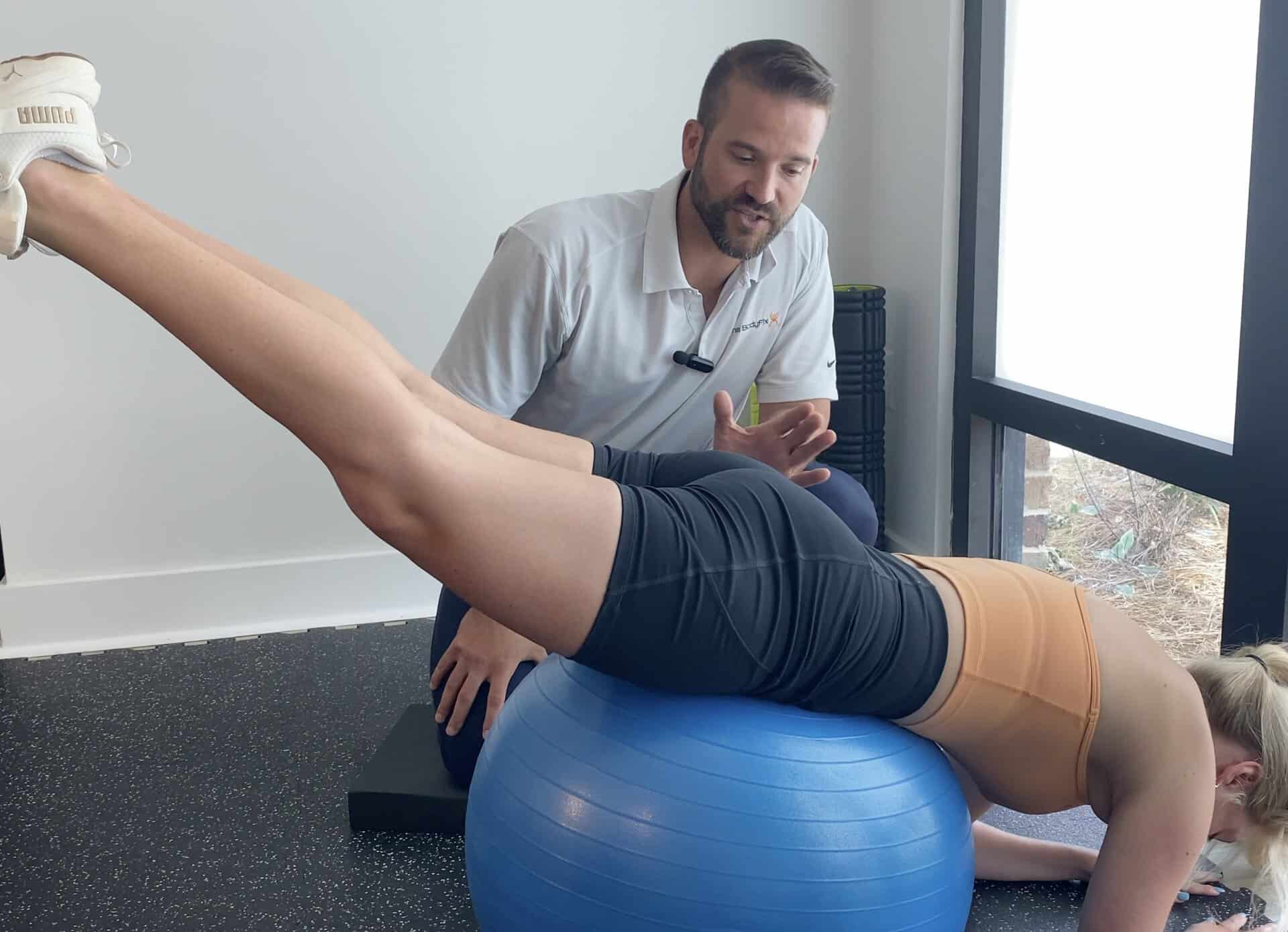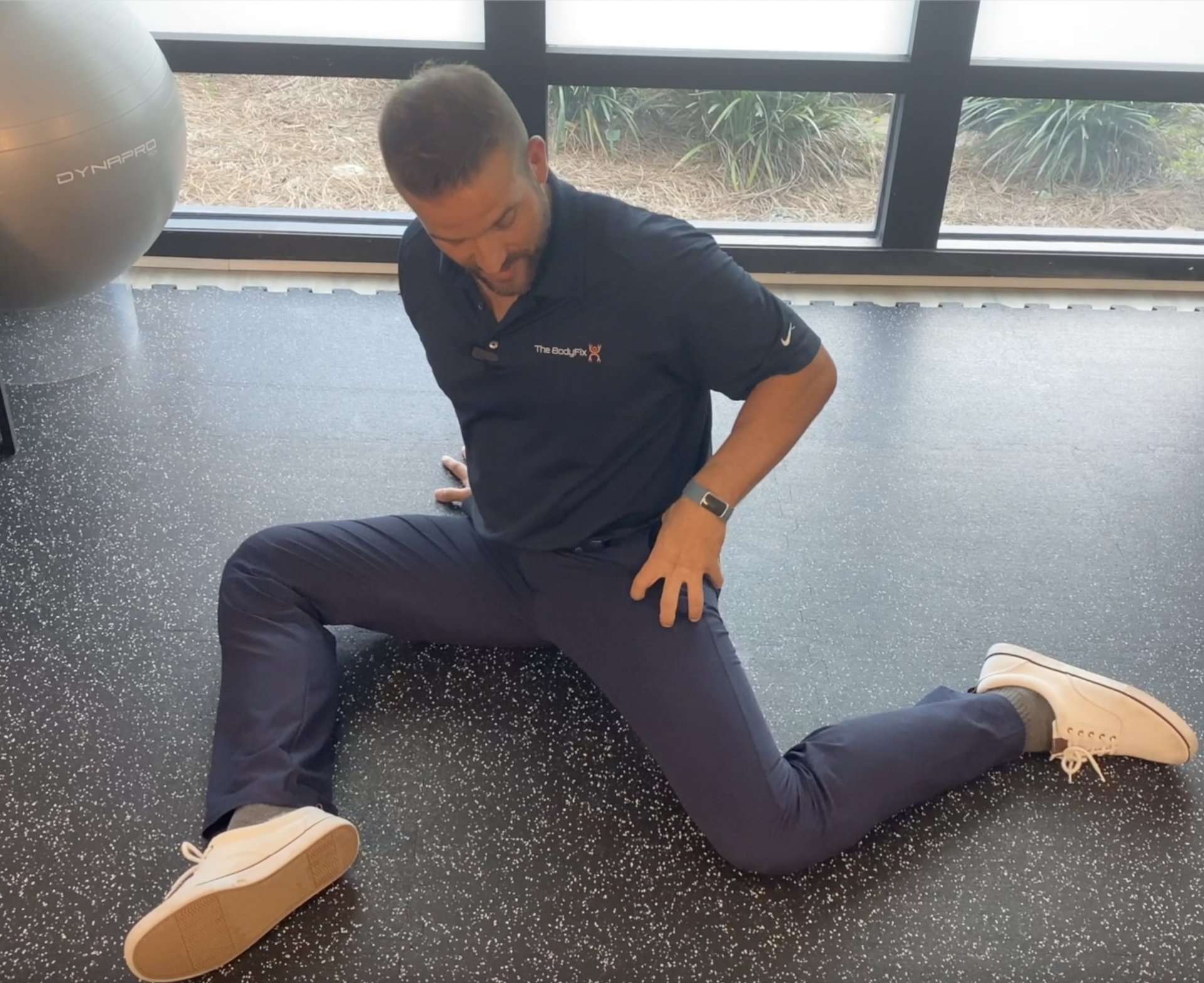As a chiropractor, I’ve seen countless patients suffering from low back pain caused by their favorite pastime: golf. It’s no secret that the repetitive motions and intense twisting forces involved in a golf swing can take a toll on your spine, leading to discomfort, decreased performance, and even long-term injuries. With the right knowledge, techniques, and care, you can conquer lower back pain and get back to enjoying your time on the green. In this article, we’ll dive deep into the world of golf-related lower back pain and explore effective strategies for prevention, treatment, and recovery.
Key Takeaways
- Golf swings can put significant stress on the lower back, leading to pain and injury
- Proper technique, flexibility, and core strength are essential for preventing lower back pain
- Chiropractic care and spinal decompression therapy can effectively alleviate golf-related lower back pain
Table of Contents
- The Anatomy of the Lower Back and Its Role in Golf
- Understanding the Golf Swing and Its Effects on the Lower Back
- Risk Factors for Developing Lower Back Pain from Golf
- Symptoms and Types of Lower Back Pain in Golfers
- Proper Warm-Up and Cool-Down Routines for Golfers
- Prevention Strategies for Lower Back Pain in Golf
- Treatment Options for Golf-Related Lower Back Pain
- The Role of Nutrition and Hydration in Spinal Health for Golfers
- Mental Strategies for Managing Lower Back Pain and Optimizing Performance
- Recovery and Return to Golf
- Understanding Disc Injuries and the Benefits of Spinal Decompression Therapy
- FAQs
- Conclusion
The Anatomy of the Lower Back and Its Role in Golf
To understand how golf affects your lower back, it’s crucial to have a basic understanding of the anatomy at play. Your lower back, or lumbar region, is composed of five vertebrae (L1-L5)1, which are supported by a complex network of muscles, ligaments, and joints. These structures work together to provide both stability and flexibility, allowing you to generate powerful swings while maintaining control.
During a golf swing, the lumbar spine is subjected to significant rotational forces, which can strain the surrounding tissues. The erector spinae muscles, which run along either side of your spine, play a vital role in supporting and stabilizing your lower back throughout the swing. Additionally, the intervertebral discs between each vertebra act as shock absorbers, distributing the compressive forces evenly.
Maintaining a balance between strength and flexibility in these key anatomical structures is essential for preventing lower back pain and optimizing your golf performance. By focusing on exercises that target the core, hips, and lower back, you can create a solid foundation for a pain-free golf game.
Understanding the Golf Swing and Its Effects on the Lower Back
The golf swing is a complex movement that requires coordination, power, and precision. However, the very nature of the swing can place significant stress on your lower back. Let’s break down the biomechanics of the golf swing and explore how it can contribute to lower back pain.
During the backswing, your lumbar spine undergoes a combination of rotation and side bending. This motion, known as the “X-factor2,” creates a coiling effect that stores energy for the downswing. As you transition into the downswing, your lower back experiences a rapid uncoiling, generating tremendous rotational forces and torque.
Common swing characteristics that can lead to lower back pain include:
- Overextension during the backswing
- Excessive lateral bending
- Reverse spine angle at impact
- Loss of posture throughout the swing
These swing faults can result in increased compressive forces on the intervertebral discs, leading to twisting and contraction. Over time, this repetitive stress can cause the discs to bulge or herniate, pressing on nearby nerves and causing pain, numbness, or weakness in the lower back and legs.
Risk Factors for Developing Lower Back Pain from Golf
While improper swing technique is a significant contributor to lower back pain in golfers, there are several other risk factors to consider. Understanding these factors can help you take proactive steps to minimize your risk of injury.
- Lack of flexibility and core strength: Poor flexibility in the hips, hamstrings, and lower back can lead to compensatory movements during the swing, placing extra stress on the lumbar spine. Similarly, weak core muscles can result in a lack of stability and support for the lower back.
- Overuse and fatigue: Spending long hours in the driving range or playing multiple rounds without adequate rest can lead to muscle fatigue and an increased risk of injury.
- Pre-existing back conditions: Golfers with a history of lower back issues, such as herniated discs, degenerative disc disease, or spinal stenosis, may be more susceptible to pain and injury.
- Age and gender: As we age, our spines naturally lose some of their flexibility and resilience. Additionally, research suggests that female golfers may be more prone to lower back pain due to differences in swing mechanics and muscle recruitment patterns.
By identifying and addressing these risk factors, you can take steps to minimize your risk of developing golf-related lower back pain.
Symptoms and Types of Lower Back Pain in Golfers
Golf-related lower back pain can manifest in various ways, ranging from mild discomfort to debilitating pain. Some common symptoms include:
- Dull, aching pain in the lower back, particularly on one side
- Sharp, shooting pain that radiates down the buttocks and back of legs (sciatica)
- Stiffness and reduced range of motion in the lower back
- Muscle spasms or tightness in the lower back and hips (protection mechanism)
- Difficulty standing upright/leaning stuck on one side (antalgic lean) or transitioning between postures
Several types of lower back injuries can occur in golfers, such as:
- Muscle strains: Overexertion or improper swing mechanics can cause small tears in the lower back muscles, leading to pain and inflammation.
- Herniated or bulging discs: Repeated compressive forces and twisting motions can cause the intervertebral discs to bulge or rupture, pressing on nearby nerves.
- Facet joint syndrome: Inflammation and irritation of the small joints between the vertebrae can cause localized pain and stiffness.
- Sacroiliac joint dysfunction: Abnormal motion or alignment of the sacroiliac joint, which connects the lower spine to the pelvis, can lead to lower back pain and instability.
Note: People mostly have a combination of issues/diagnoses of the above-listed
If you experience persistent or severe lower back pain, it’s essential to consult with a healthcare professional, such as a chiropractor, for an accurate diagnosis and appropriate treatment plan.
Experience the BodyFix Difference
Experience the difference that patient-centric, whole-body chiropractic care can make. Discover how The BodyFix’s unique approach addresses not just your pain, but your overall wellness for lasting results.
Proper Warm-Up and Cool-Down Routines for Golfers
Preparing your body for the physical demands of golf is crucial for preventing lower back pain3 and optimizing your performance. A proper warm-up routine should include:
- Dynamic stretching: Focus on movements that gently stretch and activate the muscles in your lower back, hips, and core. Examples include trunk rotations, leg swings, and cat-camel stretches. STOP doing static stretching like reaching down and touching the toes for 1 minute. When you go to any ball game do you see any athletes stretching statically or are they doing some kind of dynamic movement to get ready for their precise movements.
- Activation exercises: Incorporate exercises that engage your core and stabilize your spine, such as planks, bird dogs, and bridges.
- Gentle swings: Start with short, controlled swings using a wedge or short iron, gradually increasing your range of motion and club speed. In fact, many athletes start off slow and concise like this to have better ball contact and it gives you a better feel of your overall movement to perform bigger swings.
After your round or practice session, be sure to cool down with some light dynamic stretches for your lower back, hips, and hamstrings. I know you want to grab that beer right away especially when its hot out there, but this will help reduce muscle tension, promote flexibility, and minimize post-game soreness.
Prevention Strategies for Lower Back Pain in Golf

Preventing lower back pain is far easier than treating it once it occurs. Here are some key strategies to help you stay pain-free on the course:
- Swing modifications and technique improvements: Work with a golf coach or biomechanics expert to identify and correct any swing faults that may be contributing to your lower back pain. Focus on maintaining good posture, keeping your spine angle consistent, and avoiding excessive lateral bending or overextension. If your full swing is creating chunk after chunk or thin after thin then think about getting an instructor. You’re going to spend money but potentially save your back.
- Core strengthening and flexibility exercises: Incorporate exercises that target your core, hips, and lower back into your regular fitness routine. Some examples include:
- Planks and side planks
- Russian twists
- Supermans
- Bridges
- Lunges and squats
- Yoga and Pilates-inspired movements
- Equipment considerations: Make sure your clubs are properly fitted to your height, swing style, and skill level. Using clubs that are too long or too short can lead to improper swing mechanics and increased stress on your lower back. Additionally, consider using a lighter golf bag or a push cart to minimize the strain of carrying your clubs.
- Proper posture and body mechanics: Pay attention to your posture both on and off the course. When sitting, standing, or lifting objects, keep your spine in a neutral position and engage your core muscles. Avoid slouching or hunching over, as this can place extra stress on your lower back.
By implementing these prevention strategies and making them a consistent part of your golf routine, you can significantly reduce your risk of developing lower back pain and enjoy the game you love for years to come.
Treatment Options for Golf-Related Lower Back Pain
If you’re already experiencing golf-related lower back pain, don’t despair! There are several effective treatment options available to help you find relief and get back to your best game. Here are some of the most common approaches:
- Rest and recovery: Sometimes, the best thing you can do for your lower back is to take a break from golf and allow your body to heal. Take a few days off from swinging and focus on gentle stretching, light exercise, and relaxation techniques.
- Heat therapy: Applying heat to your lower back for 15-20 minutes at a time can help modulate inflammation and increase blood flow in the acute stage of an injury.
- Pain medication and anti-inflammatory drugs: Some people take over-the-counter pain relievers like acetaminophen or ibuprofen for mild to moderate lower back pain but we believe this route just leads to a band-aid type of approach on your issues. For more severe cases, your M.D. may prescribe stronger medications or muscle relaxants.
- BodyFix Chiropractic Method: As a chiropractor, I’ve seen firsthand the incredible benefits of chiropractic spinal manipulation treatments for golf-related lower back pain. But that’s just the tip of the iceberg. We go beyond the adjustment to see what kinetic chains are faulty and need to be addressed. Watching a person do a squat, lunge, or pushup in the beginning stage to see what muscles, joints, ligaments, fascia, and nerves are not functional. We often incorporate soft tissue therapies, such as massage or instrument-assisted soft tissue mobilization (IASTM), to address muscle tension and promote healing. Active Release Technique is our Gold standard for taking care of those tight adhesive muscles.
- Our Spine-Med decompression therapy: For golfers with herniated or bulging discs, non-surgical spinal decompression therapy can be a game-changer. This innovative treatment uses a specialized table to gently stretch and decompress the spine, creating negative pressure within the discs. This negative pressure helps to reduce disc bulges, promote nutrient flow, and alleviate pressure on nearby nerves. At our practice, we’ve seen countless patients experience significant relief from lower back pain and sciatica with spinal decompression therapy. But be careful which machine you get on! Ask us why we choose Spine Med as our Gold Standard.
The Role of Nutrition and Hydration in Spinal Health for Golfers
While it may not be the first thing that comes to mind when thinking about lower back pain, nutrition, and hydration play a crucial role in maintaining spinal health for golfers. Here are a few key points to keep in mind:
- Anti-inflammatory diet: Incorporating foods rich in anti-inflammatory compounds, such as omega-3 fatty acids, turmeric, and ginger, can help reduce inflammation throughout the body4, including the lower back. Aim to eat plenty of leafy greens, fatty fish, nuts, and seeds, while limiting processed foods and refined sugars.
- Proper hydration: Staying well-hydrated is essential for maintaining the health and resilience of your intervertebral discs. These discs are largely composed of water, and when you become dehydrated, they can lose some of their shock-absorbing capabilities. Make sure to drink plenty of water and electrolytes before, during, and after your rounds to keep your spine healthy and functioning optimally.
- Supplements for joint and tissue support: Certain supplements, such as glucosamine, chondroitin, and collagen, may help support the health of your joints and connective tissues. While research on their effectiveness is mixed, some golfers find that these supplements help reduce joint pain and stiffness. Xymogen is the brand we recommend since their quality testing is of the highest degree and you can only get their ingredients through a Doctor’s prescription.
Mental Strategies for Managing Lower Back Pain and Optimizing Performance
The mental aspect of golf is just as important as the physical, and this holds true when it comes to managing lower back pain. Here are a few mental strategies to help you stay focused, relaxed, and pain-free on the course:
- Positive self-talk: Instead of dwelling on your pain or limitations, focus on positive affirmations and visualizations. Tell yourself, “I am strong, flexible, and resilient,” or “I swing with ease and grace.” These positive thoughts can help reduce stress and tension in your body, allowing you to play your best. Sounds silly but you would be surprised what the body does when the mind is concentrated.
- Breathing exercises: Deep, diaphragmatic breathing can help relax tense muscles, reduce pain perception, and promote a sense of calm and focus. Take a few deep breaths before each shot especially through your diaphragm, focusing on expanding your belly and releasing tension on the exhale.
- Mindfulness and body awareness: Pay attention to your body’s signals and sensations throughout your round. If you notice any tightness, discomfort, or pain, take a moment to stretch, adjust your posture, or take a brief rest. By staying in tune with your body, you can catch potential issues early and prevent them from escalating. If you feel the lower back starting to seize up like a vice do yourself a favor and stop and go that checked out. Catch something early before it turns into a monster problem. Don’t just “man up.”
Recovery and Return to Golf
As you work through your lower back pain and begin to feel better, it’s essential to approach your return to golf with patience and caution. Here are a few tips to help you get back on the course safely:
- Gradual progression: Start with short sessions on the putting green so your lower back gets used to the hinging motion as your comfort level improves. Don’t rush back into playing full rounds right away.
- Maintain your exercise routine: Continue with your core strengthening, flexibility, and rehabilitation exercises even as you return to golf. These will help you maintain the progress you’ve made and reduce the risk of future injuries.
- Listen to your body: Pay close attention to how your body feels during and after your golf sessions. If you experience any pain, stiffness, or discomfort, take a step back and reassess your readiness. It’s better to take an extra day or two of rest than to push through pain and risk further injury.
Understanding Disc Injuries and the Benefits of Spinal Decompression Therapy
The intervertebral discs in your spine play a crucial role in absorbing shock, distributing stress, and allowing for smooth, fluid motion. However, the repetitive twisting and compressive forces in combo within the golf swing can cause these discs to become twisted and shear over time.
When this happens, the discs may bulge or herniate, putting pressure on nearby nerves and leading to pain, numbness, or weakness in the lower back and legs. Remember your nerves are your powerhouse energy source and if they get impinged then things don’t function at 100% capacity and it’s not just limited to your musculoskeletal system.
Fortunately, there’s hope for golfers suffering from disc-related lower back pain.
At our practice, we offer SpineMed, a non-surgical spinal decompression therapy, a cutting-edge treatment that can help alleviate pressure on the discs and promote healing. During spinal decompression therapy, you’ll lie comfortably on a specialized table that gently stretches and releases your spine in a controlled manner. This creates negative pressure within the discs, allowing them to retract and rehydrate. It’s so gentle and quiet that our folks always ask us “Is this thing even turned on?”
If you’re a golfer struggling with lower back pain caused by twisted or sheared discs, spinal decompression therapy may be the key to getting you back on the course and playing your best.
Speaking of golf courses, Dunes West is a fantastic local spot that I love to play regularly. In fact, I recently shared a video of my golf swing from Dunes West. I’m always working on improving my technique, so I’d love to hear your thoughts – do you think my swing looks good, or is there room for improvement? Let me know!
Experience the BodyFix Difference
Experience the difference that patient-centric, whole-body chiropractic care can make. Discover how The BodyFix’s unique approach addresses not just your pain, but your overall wellness for lasting results.
FAQs
How Can SpineMed help me with my back pain?
What are the most common causes of lower back pain in golfers?
How can I tell if my golf swing is causing my lower back pain?
What exercises can I do to strengthen my core and prevent lower back pain while golfing?
Is it safe to play golf with a herniated disc?
Conclusion
Golf-related lower back pain is a common challenge, but with the right knowledge, strategies, and care, it doesn’t have to keep you off the course. By understanding the biomechanics of the golf swing, implementing prevention techniques, and seeking appropriate treatment when needed, you can conquer your pain and get back to enjoying the game you love.
As a chiropractor and avid golfer myself, I know firsthand the importance of maintaining a healthy, resilient spine. Dunes West is one of my favorite local golf courses, and I feel fortunate to be able to play there regularly. Golf-related lower back pain doesn’t have to keep you off the course. If you’re struggling with golf-related back pain, our team at TheBodyFix is here to help.
We offer a range of services, including the cutting-edge SpineMED Decompression Protocol, which gently decompresses the spine to reduce disc pressure and promote healing. Don’t let back golf back pain hold you back from enjoying the game you love. Learn more about SpineMED and schedule a consultation with me today to start your journey to a pain-free golf game.
- https://emedicine.medscape.com/article/1899031-overview#:~:text=Overview-,Overview,muscles%2C%20and%20highly%20sensitive%20nerves. ↩︎
- https://www.ncbi.nlm.nih.gov/pmc/articles/PMC9219256/ ↩︎
- https://www.ncbi.nlm.nih.gov/pmc/articles/PMC3899905/ ↩︎
- https://www.ncbi.nlm.nih.gov/pmc/articles/PMC10057655/ ↩︎
Blog Disclaimer: The information provided on The BodyFix Chiro blog is for general informational and educational purposes only and is not intended as medical advice. These articles reflect our opinions and experiences but should not be used to diagnose or treat any health conditions. Always consult with your physician, chiropractor, or other qualified healthcare provider before starting any new treatment, exercise program, or making changes to your health routine. Any actions you take based on information from this blog are entirely at your own risk, and The BodyFix Chiro and its contributors disclaim any liability for the decisions you make based on this information.




